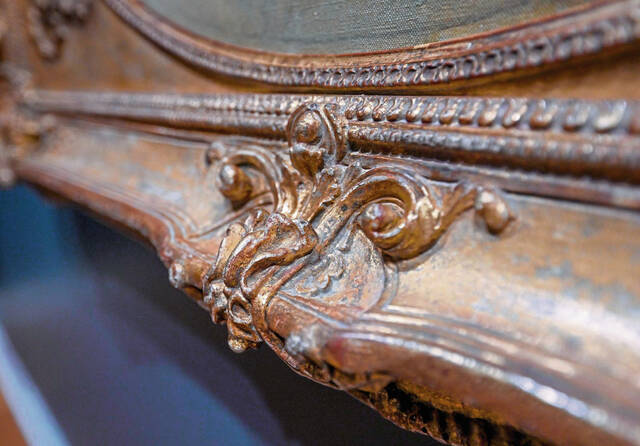Behind the art: The Westmoreland's Mary Cassatt painting hints at subtle message
Painter Mary Cassatt often depicted images of women and children, emphasizing the intimate bonds between mother and child.
One such work is “Mother and Two Children,” painted around 1905, which came into the permanent collection of The Westmoreland Museum of American Art via anonymous gift in 1979.
It’s a prime example of Cassatt’s signature work, said Jeremiah William McCarthy, the Greensburg museum’s chief curator — but there’s more to it than immediately meets the eye.
“When I first came here, I thought, ‘That’s a nice Cassatt,’ and I kept walking,” McCarthy said. “But I think, the more time you spend with it, the more extraordinary you realize it is. It’s one of those paintings that rewards long looking.”
The work was one of three Cassatt submitted to a competition for work to hang in a women’s lounge in the Pennsylvania state capitol building in Harrisburg.
“She got the commission, but apparently there was a lot of corruption – shocker – and she got very frustrated and eventually withdrew the works,” McCarthy said. The lounge was never built.
“Mother and Two Children” is tondo, a Renaissance term for a circular work of art.
“If people think of a tondo, they think of a mother and child, Mary, a trinity, a certain type of religious iconography,” McCarthy said. “But I was puzzled by the garment the mother wears.”
It’s a pale yellow, cape-like piece of clothing — similar to something worn by a subject in Cassatt’s “Woman With a Sunflower,” included in a 1915 exhibition that raised funds for the women’s suffrage movement and now in the collection of the National Gallery of Art in Washington, D.C.
The sunflower became the official symbol of the National American Woman Suffrage Association in 1896.
Fascinating link
“In the literature about Mary Cassatt, they’re always reticent to call her a feminist, but consistently — if you look for it — you find her engaging with that material,” McCarthy said. “Coming 14 years before women get the vote, it starts to change your thinking around the painting.
“It’s fascinating to think of this painting by linking it to the other dress, especially when you think that it was going into a women’s lounge,” he said. “You start to see that she could be nodding at something that is not immediately evident.”
BEHIND THE ART SERIES:
• The Westmoreland's Tiffany window 'a treasure among treasures
Cassatt was born in 1844 in Allegheny City, now Pittsburgh’s North Side. She spent much of her working life in Paris, where she befriended Edgar Degas and exhibited with the Impressionists.
Her work was “remarkably abstract” for a time when most people were painting realistic scenes, McCarthy said.
Cassatt would often use bright blue or bright red-orange to outline certain aspects of her subjects.
“It’s like a painter’s trick to draw your eye to certain things that you’d naturally want to touch. Like everyone has touched a chubby baby’s foot,” McCarthy said. “It creates this sense of tactile life and flesh in a way that is also kind of subversive — to frame women not as objects of sexual desire, but to frame them as lived beings with pulses and bodies and minds and interior lives that you will never access.
“It’s very radical, I think, in 1905, and one of the main ideas that will carry modern art into the 21st century,” he said.
Cassatt’s technique also suggests the innate bond between mother and child.
“The way a child and a mother communicate isn’t through language, it’s literally through a body-to-body relationship, that you share something that no one else will share,” McCarthy said. “It’s very ironic, and one of the things that pulls me to her work, is that she never had children.
“It’s an interesting proposition that the painter we most associate with motherhood never had a child. It shows you what real empathy looks like.”
Since it was acquired, “Mother and Two Children” has been one of the most popular pieces in The Westmoreland’s Collection. It also has been included in retrospectives of Cassatt’s work in Japan and France.
Because of Cassatt’s Western Pennsylvania origins, McCarthy said, “It’s very exciting to have such a good representation of her work back home, in a way.”
Shirley McMarlin is a Tribune-Review staff writer. You can contact Shirley by email at smcmarlin@triblive.com or via Twitter .
Remove the ads from your TribLIVE reading experience but still support the journalists who create the content with TribLIVE Ad-Free.




